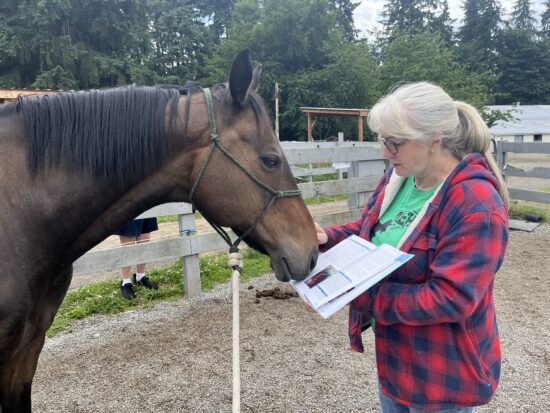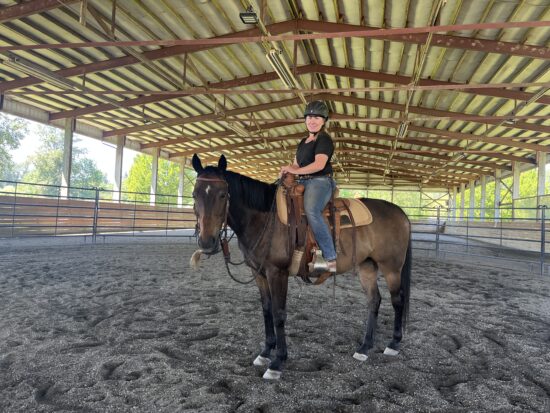Picture this: a Rocky-style montage of Jax during his rehab. Instead of running stairs, he’s going over trot poles, elevating his back to relieve pressure off his spine. He’s getting strapped into the saddle for the first time in over a month. He’s emerging victorious from his diagnosis, this initial battle won. Kissing spines is not something that is ever completely remedied, but with proper care and surveillance, it can in some cases be successfully managed, and it appears as though Jax is one such case.
So, more about his rehab process. After his injections, Jax was set to have a bit of time off before getting back into the swing of things. Our vets always provide us with a detailed re-entry into work plan depending on the individual horse, and this was no different. The gist of it is usually something along the lines of some time off, and then a gradual increase in time, gait intensity, and tack until the horse is back at it’s original level of performance. Of course, adjustments can be made if needed — some horses will never quite make it back to where they were pre-injury (or diagnosis), so along the way we are always carefully monitoring in the event we need to adapt.
One of the vet’s suggestions for Jax was finding ways to elevate his back muscles to take some of the pressure of his spine. Sending him over trot poles was one simple method they recommended. Bonnie, who had been riding and working with Jax up to the point of his diagnosis, quickly changed course and became a trot pole pro, keeping up his daily appointments to help strengthen his back. Jax was, for the most part, a willing participant, learning the ropes with ease.
Another suggestion of our vets was to try a therapeutic tape, like Equi-Tape, to help with muscle engagement in a more passive way. Our dear friend Jackie came by to help tape Jax up, a process for which he was an engaged (and well-informed!) participant. He was incredibly patient as he got all taped up, and had some big yawns after all was said and done, which we like to think means he was feeling good.
The final step of his rehabbing involved encountering the saddle once again. This was, in some ways, the true test of how his recovery was going, given that sensitivity to being cinched up had been the initial indication that something wasn’t quite right. And after all the work that had been done to get him there, it appeared as though he was ready to be back in the saddle.
He is still taking it easy under saddle, doing some light work with a rider, which is likely to be the best and most sustainable path for him going forward. We will continue to check in each time we work him to ensure that he is still remaining comfortable, but so far, so good!




